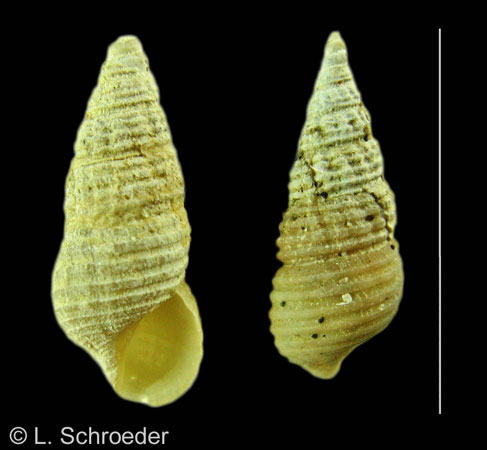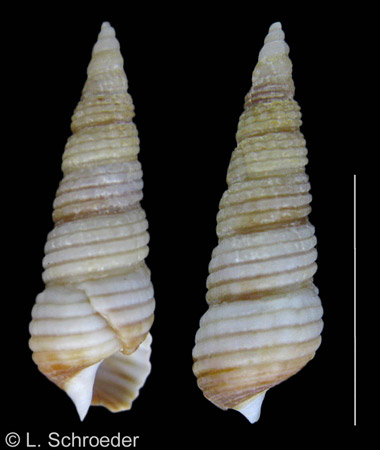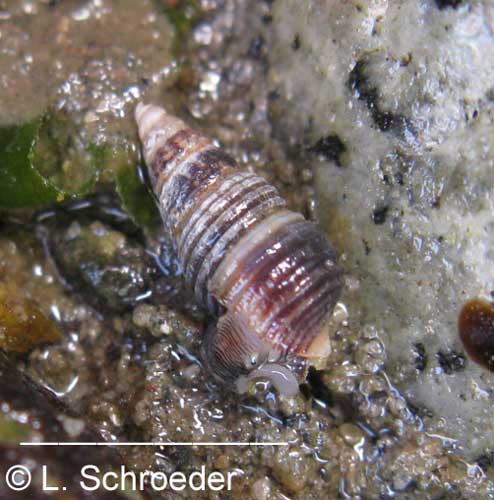Gastropods
Family Batillariidae, Cerithiidae & Cerithiopsidae
.
Click on photo to enlarge. Scale line in photo equals 1cm unless otherwise specified.
* Species which are commonly encountered on the beach.
Batillariidae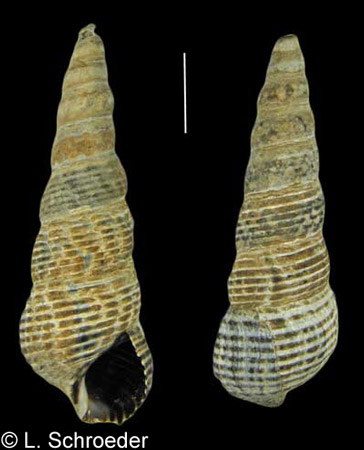
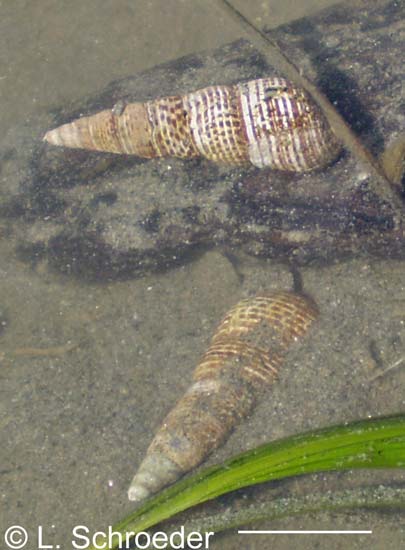
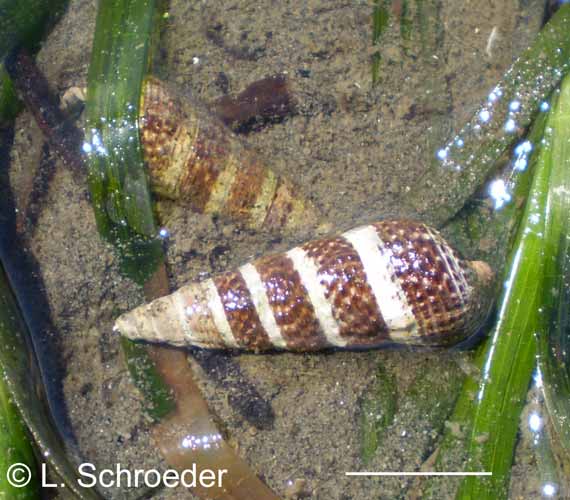 Padilla Bay, WA
Boundary Bay, BC, intertidal
Padilla Bay, WA
Boundary Bay, BC, intertidal
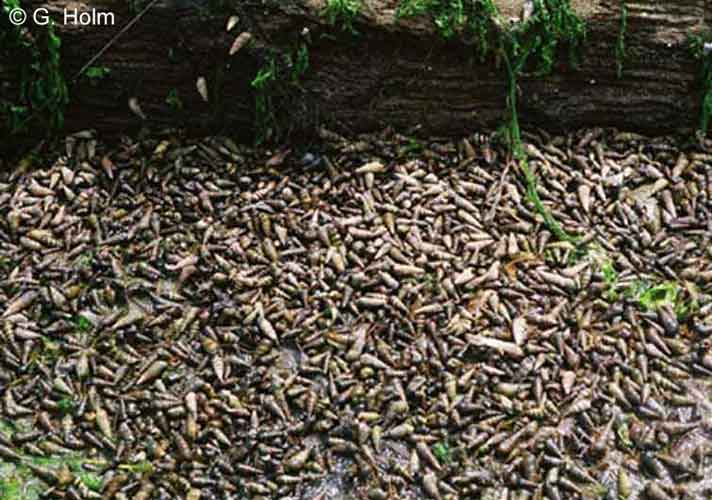 Boundary Bay, BC, intertidal, can be very abundant
Boundary Bay, BC, intertidal, can be very abundant
Cerithiopsidae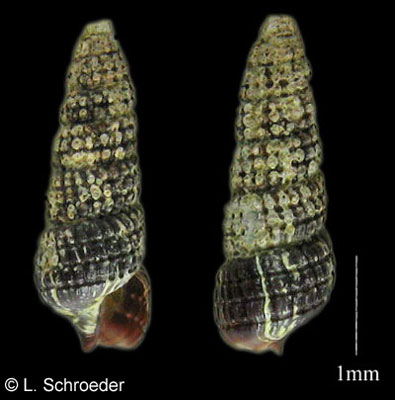
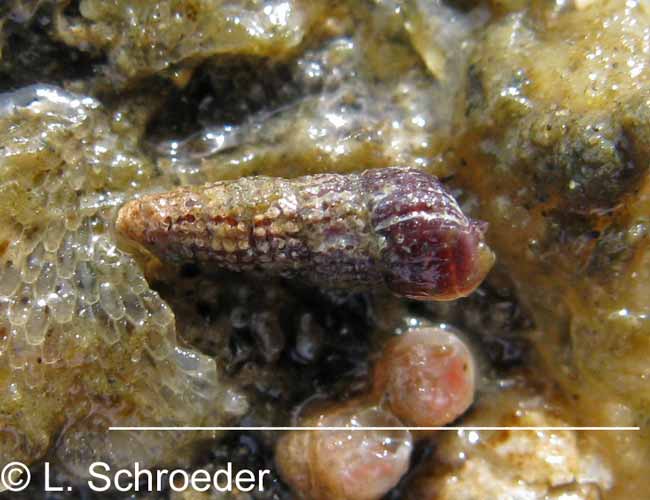 Oak Bay, WA,
intertidal
Oak Bay, WA,
intertidal
This
species gets to at least 4mm. The spiral and axial grooves form
beading. The beading is somewhat flattened, especially in the
later whorls.
Batillaria attramentaria (G.B. Sowerby I, 1855)
Mudflat Snail *
intertidal
central California to central BC;
Japan size to 50mm
This is commonly found and can be extremely abundant in places. It was
introduced
from Japan with oyster seed. The shell has spiral ribbing and may
be uniform in color, usually gray-brown, or striped with white.
The interior of the aperture is dark. As the name suggests, it
prefers mud or muddy sand.
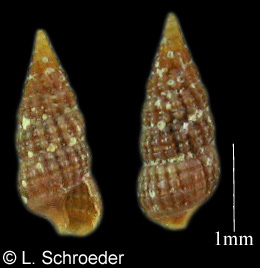 Cerithiopsis sp. 3
Cerithiopsis sp. 3
This species is similar to #2, except that the sutures between the whorls seem less impressed and the body whorl more rounded.
Bittium vancouverense
Dall & Bartsch, 1910
intertidal to subtidal size to at least 10mm
southern BC to central Alaska
This is infrequently found. The shell is dark with spiral ridges and pronounced beading from axial grooves.
Neostylidium eschrichtii (Middendorff, 1849)
Threaded Bittium *
intertidal to 55m northern Mexico to southern Alaska size to 20mm
This
is commonly found intertidally. It is the largest of the Bittiums
in our area. They are found under rocks and are often
inhabited by hermit crabs. The shell is gray to brown. It
has flattened spiral
cords and no axial grooves.
(previous names - Stylidium eschrichtii, Bittium eschrichtii, Turritella eschrichtii)
This is a recent change from Stylidium to Neostylidium. See reference - Doweld, A. (2013)
The
Cerithiopsis are a little understood group in the Pacific Northwest
which need further study. We do not attempt to identify them to
species
level at this time. Our numbering system does not correlate to
any other reference, but is simply our own way to keep track of the
types we have found. We are not sure exactly how many valid
species exist in our area.
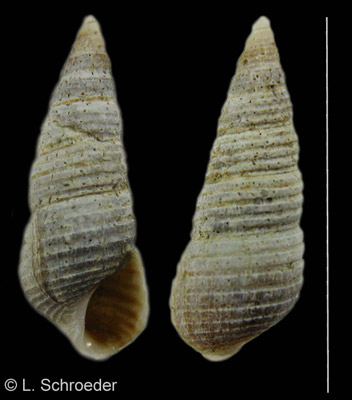 Whiskey Creek Beach, WA
Whiskey Creek Beach, WA
This page last revised: 5-25-2019
Cerithiidae
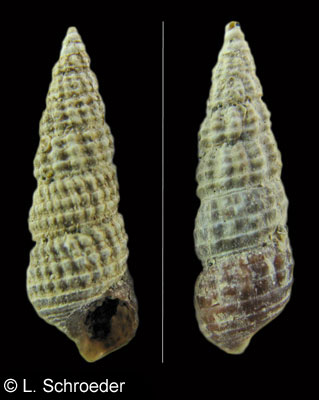 Tofino, BC
Tofino, BC
 Campbell River, BC
Campbell River, BC
Cerithiopsis sp. 2
This species gets to at least 4mm.
It is also beaded only the beads are rounded and rather prominent.




